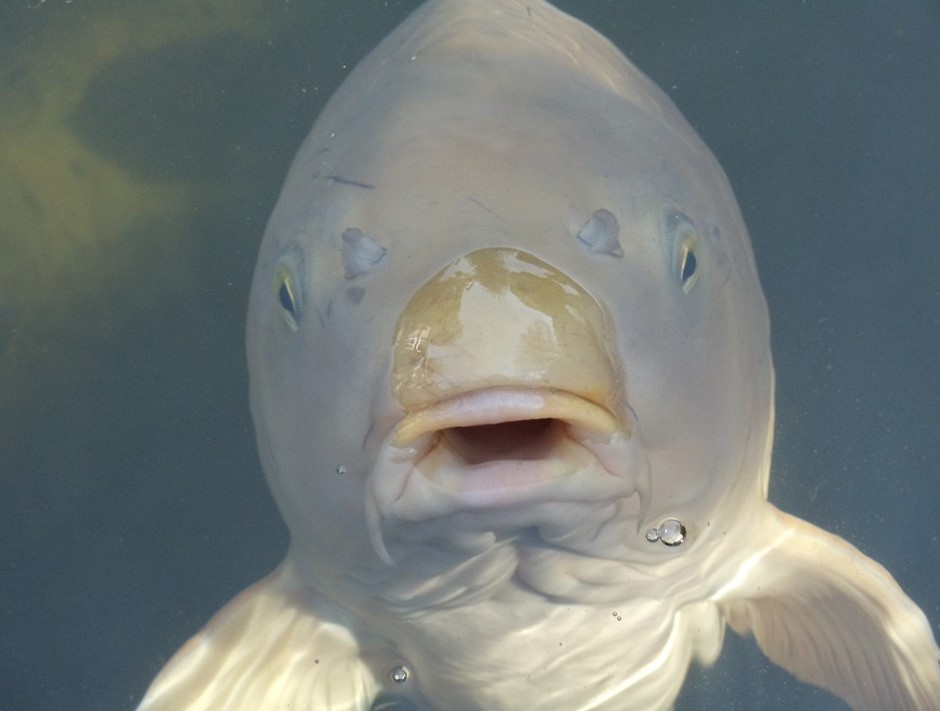Koi Nutrition for the Koi Keeper
# 1 - Introduction
For fish in captivity, nothing is more important than sound nutrition and adequate feeding. Fish in captivity have been cut off from natural sources of nutrition. Our ponds are literally miniature sections of natural streams. But there are not the continuous inflow of massive volumes of water to ensure a continuous supply of food.
If the fish do not consume the feed or if the fish are unable to utilize the feed because of some nutrient deficiency, then there will be no growth or replacement of cells. Further, an undernourished organism cannot maintain its health and be productive, regardless of the quality of its environment.
No matter the genetics of the koi or the sophistication of the filter system or the amount of oxygen in the water or the size of the pond – our koi cannot reach their potential and sustain this, without correct nutrition over a sustained period of time.
Koi are literally coloured carp (Cyprinus Carpio). The earliest mention of the cultivation of carp in history appears to refer to China at least 2500 years ago. However, there are fossil remains of fish of the carp family dating back millions of years. Having successfully survived millions of years, the carp families feeding habits and nutritional requirements have been shaped accordingly.
In some unsympathetic quarters, carp are often referred to as the 'pigs' of the fish world. Their ability to consume and assimilate virtually anything has accorded them this indignity. Their ability to assimilate a large variety of food substances has great advantages for the hobbyist.
Koi are bottom feeders. In their natural environment a koi's intake of nutritional substances is extremely varied. As they browse around their environment, using their barbels as sensors, koi consume small amounts of food continually through out the day. This intake of food is always wet, whereas the pellets we feed them are dry. If we can approach replication of these two basic facts, we will be along way towards successful koi nutrition.
It is vital we remember Koi are bred for their beauty - their body shape, their colour, the intensity of the colour and pattern and their skin lustre. They are not bred for feed fish, to be raised as quickly as possible with out any regards to body shape, colour and lustre.
Many koi food formulations are based on commercial carp feeds. These contain the minimum amount of nutrition for the least cost.
Therefore other parameters are applicable to koi feeds and not just the minimum possible amount of nutrition in the pellets we feed them.
A neglected aspect and often overlooked important aspect of Koi nutrition is that every day the body looses billions of cells and these need replacement. Not only growth is important in the formulation of koi feeds but the critical cell replacement is also just as important.
Definitions applicable to Koi Nutrition - A
Amino acids
The molecules from which proteins are built, each protein being composed of a specific sequence of linked amino acids.
Amino acids are the 'construction material' from which protein is made. There are two groups - essential: the critically important amino acids which the body cannot manufacture (lysine, tryptophan, threonine, leucine, isoleucine, histidine, arginine, methionine, phenylalanine and valine) and non-essential: amino acids which can be synthesized by the body if enough building blocks are available (amino groups and carbon skeletons, usually from other amino acids-such as cysteine, tyrosine, arginine, glutamic acid, carnitine, histidine and glutamine).
Amino acid profile
The pattern and proportion of essential and nonessential amino acids in a protein.
Antigens
A substance, which is not normally found in the body, but which, if introduced to the body, will challenge the immune system so producing an immune response. Continued use of antigens may result in the body adapting and becoming immune to the stimulus.
Antioxidant
A substance which prevents the formation or mitigates the formation or action of oxidizing agents, free radicals, known to cause cancer and ageing of cells
A chemical or substance added to feeds to stop fats breaking down. Vitamin E is a commonly used anti-oxidant in fish feeds.
Any substance that inhibits oxidative damage (oxidation of biological molecules creating 'free radicals').
Antioxidants work primarily by donating or "sacrificing" an electron to the free-radical thereby stabilizing the free-radical.
Ascorbic Acid
Vitamin C is a water-soluble vitamin important for many essential processes of the body, including wound healing, the function of the immune system, and formation of many connective tissues (spine, skin, blood vessels and others) A lack of Vitamin C can cause abnormalities of the spine and a reduction in the ability of the body to heal wounds.
Vitamin C in its pure form is easily oxidized and therefore has a short shelf life.
A stabilized (synthetic) form of Vitamin C is now available in better quality koi feeds.
Ash
Ash is the sum of all of the dietary minerals. It is determined by burning off all of the organic material. What is left over, the “ash”, is the mineral component.
Astaxanthin
Astaxanthin are naturally occurring carotenoids. It is the principal pigment that gives the red colour on koi a boost.

